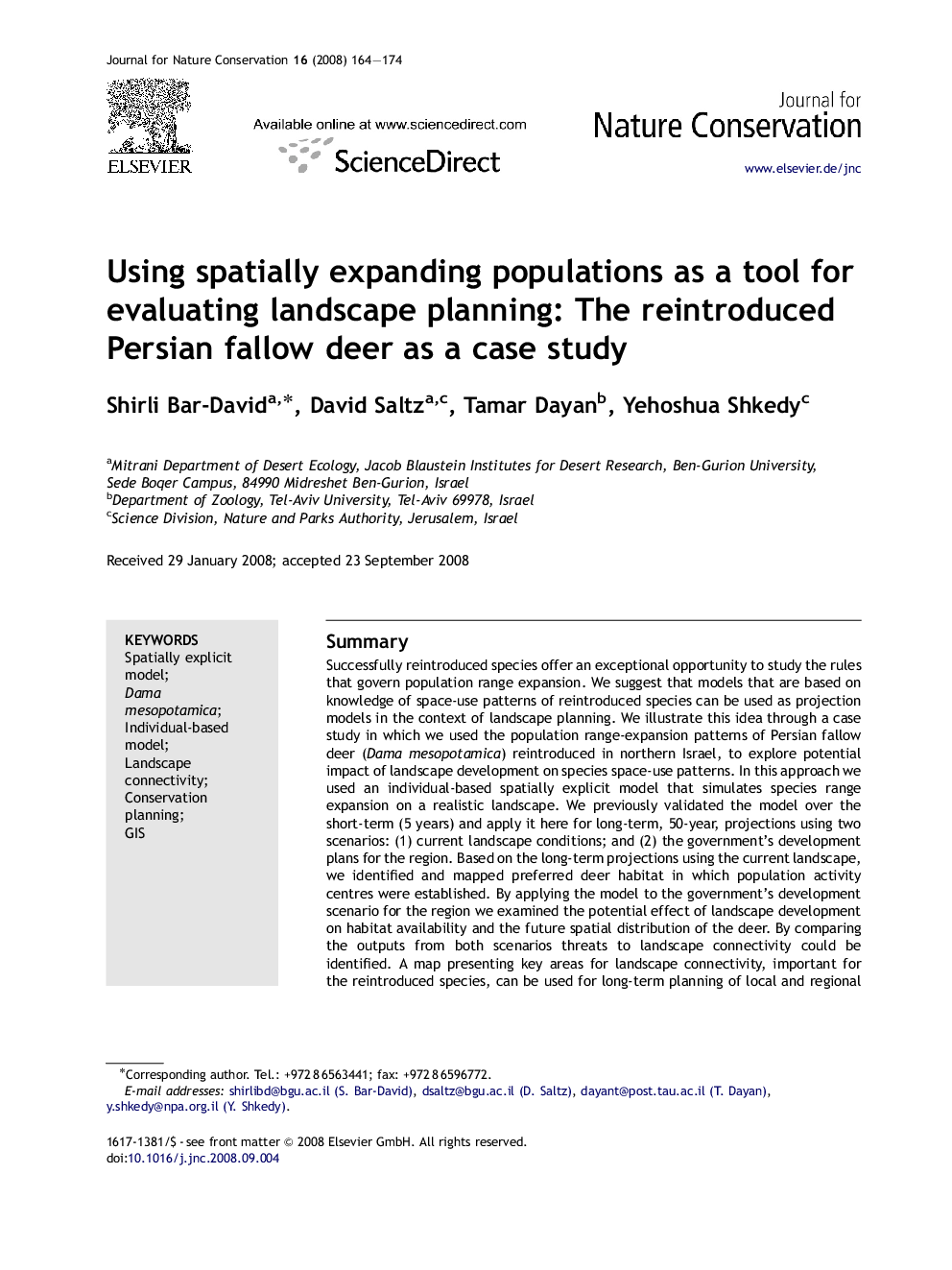| کد مقاله | کد نشریه | سال انتشار | مقاله انگلیسی | نسخه تمام متن |
|---|---|---|---|---|
| 4400053 | 1306908 | 2008 | 11 صفحه PDF | دانلود رایگان |

SummarySuccessfully reintroduced species offer an exceptional opportunity to study the rules that govern population range expansion. We suggest that models that are based on knowledge of space-use patterns of reintroduced species can be used as projection models in the context of landscape planning. We illustrate this idea through a case study in which we used the population range-expansion patterns of Persian fallow deer (Dama mesopotamica) reintroduced in northern Israel, to explore potential impact of landscape development on species space-use patterns. In this approach we used an individual-based spatially explicit model that simulates species range expansion on a realistic landscape. We previously validated the model over the short-term (5 years) and apply it here for long-term, 50-year, projections using two scenarios: (1) current landscape conditions; and (2) the government's development plans for the region. Based on the long-term projections using the current landscape, we identified and mapped preferred deer habitat in which population activity centres were established. By applying the model to the government's development scenario for the region we examined the potential effect of landscape development on habitat availability and the future spatial distribution of the deer. By comparing the outputs from both scenarios threats to landscape connectivity could be identified. A map presenting key areas for landscape connectivity, important for the reintroduced species, can be used for long-term planning of local and regional development. Under the umbrella paradigm, protecting these areas may help to also conserve other species in the same ecosystem.
Journal: Journal for Nature Conservation - Volume 16, Issue 3, October 2008, Pages 164–174